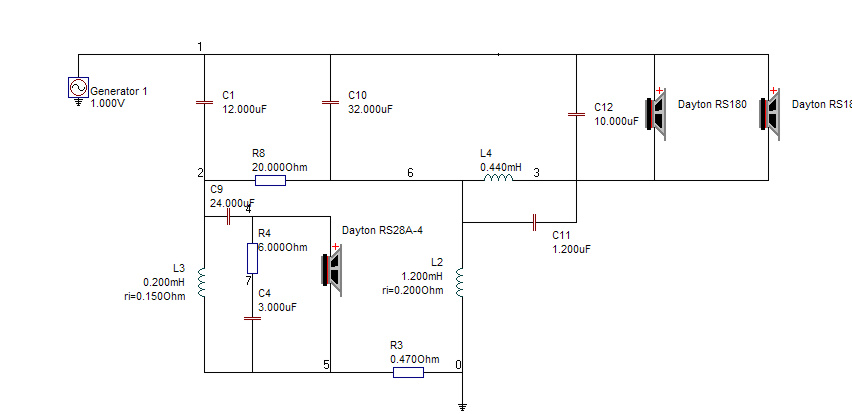This is a re-post from a PE TechTalk forum post. The guys there suggested I post here (duh!)
"I built Jon Marsh's Natalie P's (RS180-RS28 MTMs in a 9x22" baffle sealed cab) a few years ago after looking for a good mid-price project. I've been really pleased with them. I like the clarity and detail of the combination, and it was a pretty simple build with a series cross-over. They've been my workout speakers in my bedroom for a while now.
I've moved them into a different room and set up a bit more of a traditional listening position for them about 8 feet away, and now that I'm spending a little more detailed time with them, I hear a little harshness that I'd like to tweak out. I hear it primarily in electric guitars and saxophones. Voices sounds great, and other instruments are fine but with a little bit of volume behind it, the guitar and sax grates on me a hair, and I turn the volume down. In the past, when I've tuned car stereos, I've attenuated around 6kHz, if I recall, based on personal preference, but don't hold me to that.
So, the question is whether there's something I can do, short of getting an equalizer, to try to reduce the little bit of harshness I hear? Here's Roman B's comparison of the predicted frequency response curves for various cross-over designs with that speaker combination, by the way. http://www.rjbaudio.com/RS180MTM/rs180-rs28-mtm.html
Thanks in advance for the help!"
Suggestions from TT were to build another cross-over and to increase the dampening inside the cabinet to absorb some of the offending frequencies. I'm open to all suggestions!
"I built Jon Marsh's Natalie P's (RS180-RS28 MTMs in a 9x22" baffle sealed cab) a few years ago after looking for a good mid-price project. I've been really pleased with them. I like the clarity and detail of the combination, and it was a pretty simple build with a series cross-over. They've been my workout speakers in my bedroom for a while now.
I've moved them into a different room and set up a bit more of a traditional listening position for them about 8 feet away, and now that I'm spending a little more detailed time with them, I hear a little harshness that I'd like to tweak out. I hear it primarily in electric guitars and saxophones. Voices sounds great, and other instruments are fine but with a little bit of volume behind it, the guitar and sax grates on me a hair, and I turn the volume down. In the past, when I've tuned car stereos, I've attenuated around 6kHz, if I recall, based on personal preference, but don't hold me to that.
So, the question is whether there's something I can do, short of getting an equalizer, to try to reduce the little bit of harshness I hear? Here's Roman B's comparison of the predicted frequency response curves for various cross-over designs with that speaker combination, by the way. http://www.rjbaudio.com/RS180MTM/rs180-rs28-mtm.html
Thanks in advance for the help!"
Suggestions from TT were to build another cross-over and to increase the dampening inside the cabinet to absorb some of the offending frequencies. I'm open to all suggestions!


Comment